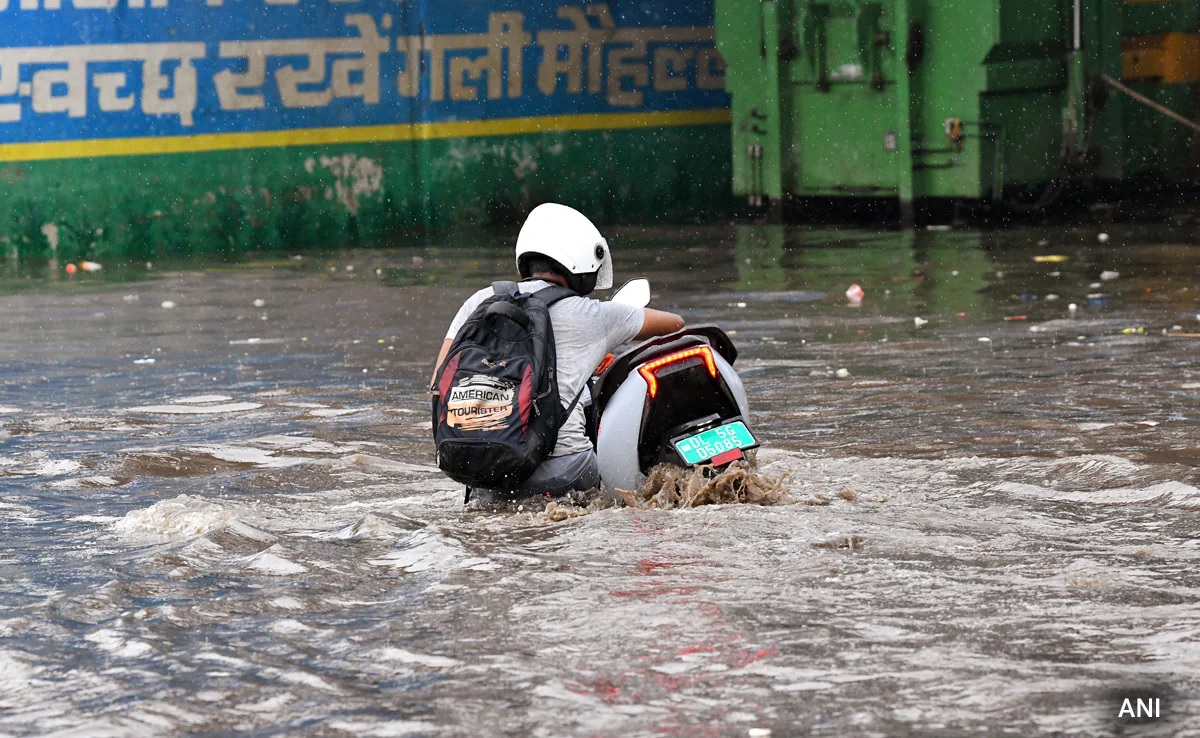Delhi Lieutenant Governor criticised the Aam Aadmi Party government for their alleged failure to ensure the desilting of drains and the Yamuna river over an extended period

In a recent development, Lieutenant Governor Vinai Kumar Saxena and the Delhi government engaged in a heated exchange regarding the issue of waterlogging in the city caused by heavy rainfall. Lieutenant Governor Saxena undertook visits to various areas prone to waterlogging on Tuesday, including the Yamuna Bazar area near the Yamuna river and the Pragati Tunnel.
During a media interaction at Yamuna Bazar, the Lieutenant Governor criticised the Aam Aadmi Party (AAP) government for their alleged failure to ensure the desilting of drains and the Yamuna river over an extended period. In response, Delhi Cabinet Minister Saurabh Bharadwaj accused Saxena of engaging in “dirty politics" amid the heavy rains.
Expressing his concerns, Saxena stated that the people of Delhi have grown weary of the recurring issue of waterlogging, which has become a yearly occurrence. He pointed out the inadequate cleaning of sewers and the improper implementation of rainwater harvesting as contributing factors to the problem. According to Saxena, the persistent waterlogging is a consequence of the necessary maintenance work not being carried out over several years.
Amid the developments, let’s take a look at what causes waterlogging in Delhi each year during rainy season, and possible solutions to the problem:
ABSENCE OF MASTER DRAINAGE PLAN
As per a report by Indian Express, despite experiencing annual instances of waterlogging during the monsoon season, the city of Delhi is still lacking a comprehensive Drainage Master Plan. In 2011, the Delhi government had entered into an agreement with IIT-Delhi to develop such a plan, and the institute submitted a report in 2018. However, the plan was ultimately deemed “generic" and devoid of actionable measures, leading to its shelving in 2021, the report said.
Former deputy chief minister Manish Sisodia, who oversaw the project, subsequently designated the Public Works Department (PWD) as the nodal agency and decided to engage consultants to create a comprehensive drainage master plan for each of the three drainage basins: Najafgarh, Trans-Yamuna, and Barapullah. The appointment of consultants was scheduled for March 2022. While the PWD initiated a tender process for the Najafgarh basin in 2022, it failed to attract sufficient bidders.
In addition to the stagnant state of the master plan, senior PWD officials have highlighted another issue: Delhi’s drains, particularly stormwater drains, are antiquated and ill-equipped to handle the recent rainfall of 125 mm within a 24-hour period, the report explains.
Officials explained that the ageing pipelines contribute to water overflow, while the increased population and unauthorised construction have resulted in clogged stormwater drains over the years.
WETLANDS
In addition to the lack of a Drainage Master Plan, there are other significant factors contributing to waterlogging issues in Delhi. Professor CR Babu, the head of the Centre for Environmental Management of Degraded Ecosystems, highlighted some of these reasons in a report by the Times of India.
According to Professor Babu, many low-lying areas that suffer from waterlogging have either lost their wetlands or have been extensively covered in concrete. This has resulted in the disappearance of natural drainage systems and raw drains that used to carry water to the wetlands. In the past, Delhi had numerous wetlands, but they were neglected, levelled, and built upon, leading to the waterlogging problems experienced in many areas today.
Furthermore, the ageing drainage system in Delhi is unable to cope with heavy rainfall, exacerbating the issue of waterlogging. Additionally, stormwater often flows into sewage networks, further contributing to flooding problems.
These factors, including the loss of wetlands, concretisation, an ageing drainage system, and stormwater mixing with sewage networks, collectively contribute to the recurring problem of waterlogging in Delhi.
WHAT IS THE SOLUTION?
Senior officials from the Public Works Department (PWD) said the city’s pipelines are ageing, leading to water overflow during heavy rainfall. Furthermore, the stormwater drains have been progressively obstructed over the years due to increased drainage and unauthorised construction associated with the growing population.
Regarding the development of a new drainage plan, the officials confirmed that consultants have been appointed for this purpose. The consultants’ role is to propose actionable solutions and provide a roadmap for implementing engineering interventions. They will also conduct an environmental impact assessment and present a detailed report, including estimates for construction work.